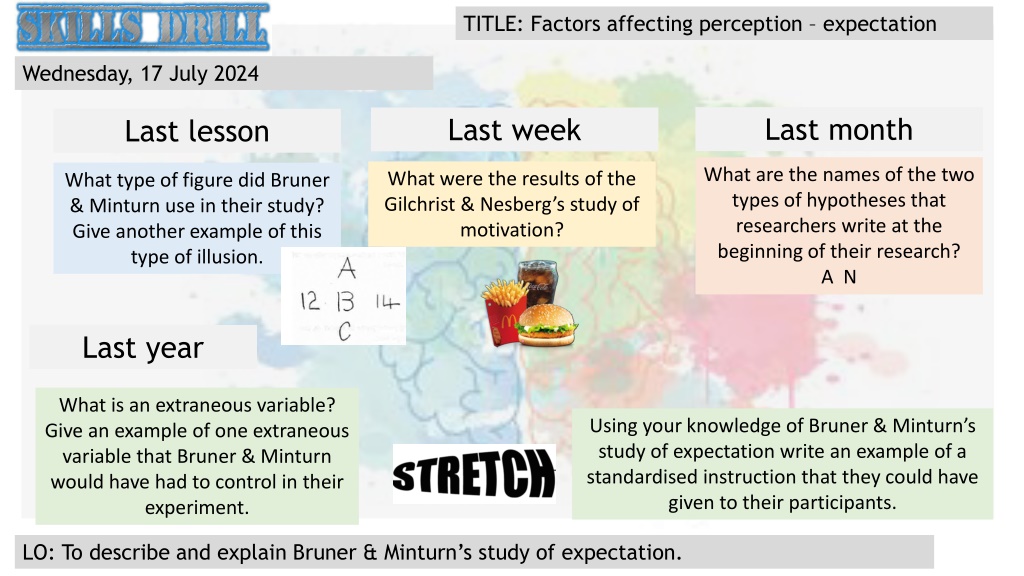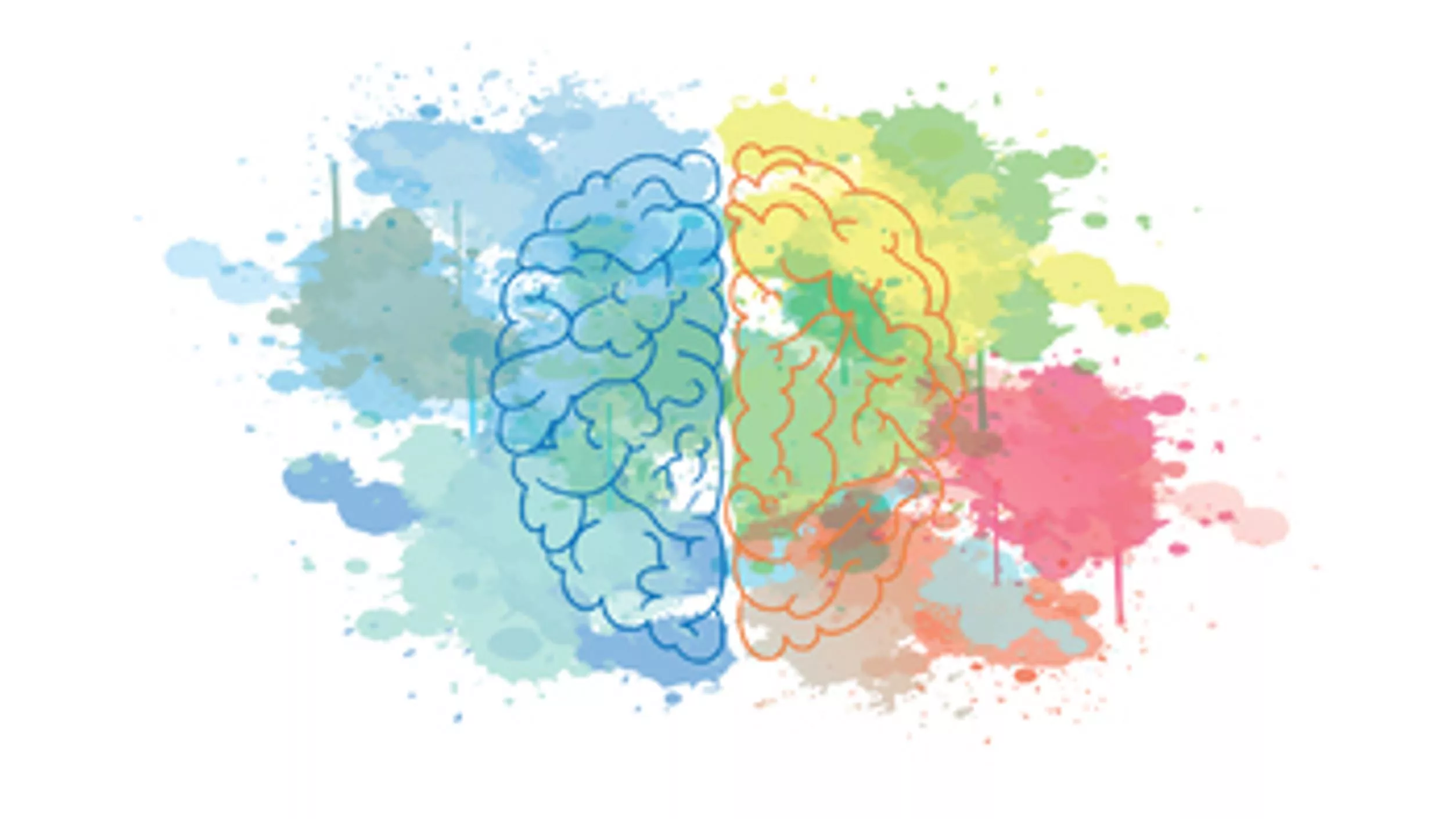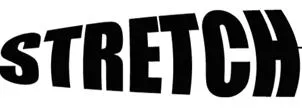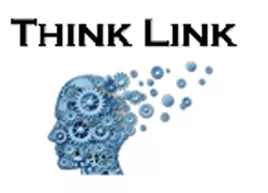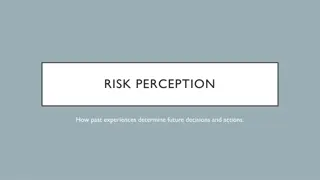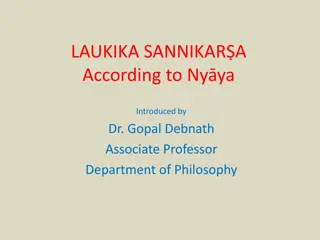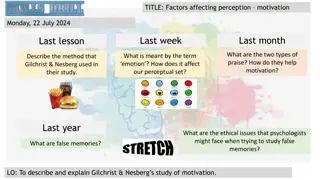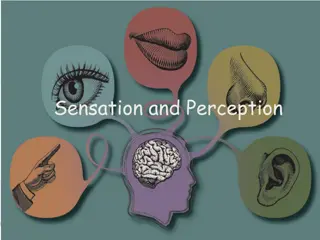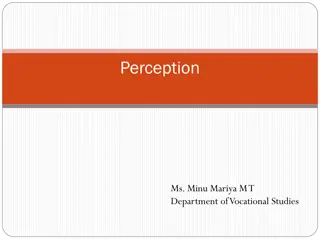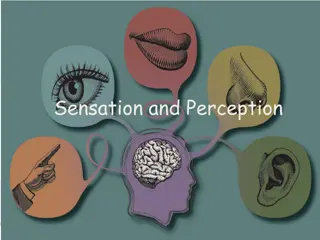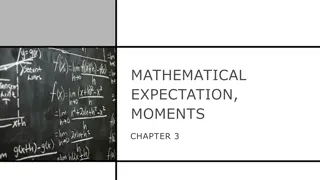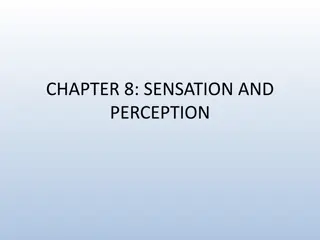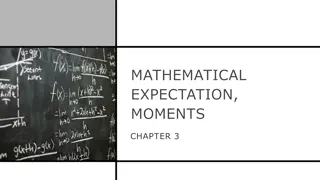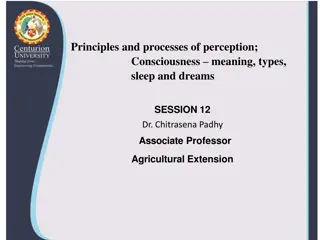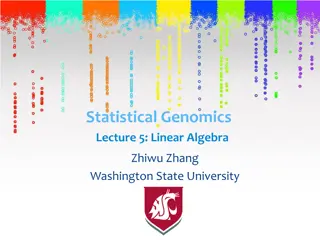Factors Affecting Perception Expectation
This content covers various aspects related to perception and expectation, including the types of hypotheses in research, results of different studies on motivation and perception, examples of extraneous variables, standardized instructions in experiments, and evaluation of research methods. The study of Bruner and Minturn on expectation is highlighted, emphasizing the use of counterbalancing as an experimental control and discussing strengths and weaknesses of the research.
Download Presentation

Please find below an Image/Link to download the presentation.
The content on the website is provided AS IS for your information and personal use only. It may not be sold, licensed, or shared on other websites without obtaining consent from the author.If you encounter any issues during the download, it is possible that the publisher has removed the file from their server.
You are allowed to download the files provided on this website for personal or commercial use, subject to the condition that they are used lawfully. All files are the property of their respective owners.
The content on the website is provided AS IS for your information and personal use only. It may not be sold, licensed, or shared on other websites without obtaining consent from the author.
E N D
Presentation Transcript
TITLE: Factors affecting perception expectation Wednesday, 17 July 2024 Last month Last week Last lesson What are the names of the two types of hypotheses that researchers write at the beginning of their research? A N What were the results of the Gilchrist & Nesberg s study of motivation? What type of figure did Bruner & Minturn use in their study? Give another example of this type of illusion. Last year What is an extraneous variable? Give an example of one extraneous variable that Bruner & Minturn would have had to control in their experiment. Using your knowledge of Bruner & Minturn s study of expectation write an example of a standardised instruction that they could have given to their participants. LO: To describe and explain Bruner & Minturn s study of expectation.
Research Methods Whenever we learn about a new key study we should be trying to link this information to what you learnt in Research Methods. In the Bruner & Minturn study, they used counterbalancing as an experimental control. Let s refresh our memory as to what this means Counterbalancing an arrangement in which half of the participants in an experiment are given the conditions in one order (A followed by B) while the other half are given them in the opposite order (B followed by A). LO: To describe and explain Bruner & Minturn s study of expectation.
Evaluation Point Evidence Explanation One weakness of the study is that it used an artificial task. An ambiguous figure is designed to trick perception. This makes the results lack validity. Another weakness relates to the fact that there may be individual differences between groups This is because an independent groups design was used. This is an issue as differences in perception between the groups may have been due to participant variables rather than their expectations. One strength of this study is that it has real-life application. It can explain errors such as misidentifying an aircraft as an enemy plane because of expectations. This therefore helps to explain why people sometimes make serious mistakes on tasks in the real world. LO: To describe and explain Bruner & Minturn s study of expectation.
1. Complete the handout. 2. Complete any unfinished tasks in your booklets. Describe one study of the effect of expectation on perceptual set and evaluate the research method used in that study. LO: To describe and explain Bruner & Minturn s study of expectation.
Q1. Bruner and Minturn tested the effects of expectation using: a. Depth cues b. Three dimensional pictures c. Photographs of everyday objects d. An ambiguous figure. LO: To describe and explain Bruner & Minturn s study of expectation.
Q2. The study design used in their study was: a. Matched pairs b. Repeated measures c. Independent groups d. Controlled participants. LO: To describe and explain Bruner & Minturn s study of expectation.
Q3. A weakness of Bruner and Minturns study was that: a. The task was not something that would occur in everyday life b. It has some serious ethical issues c. The stimulus was not very clear d. The participants had to draw the figure they thought they saw. LO: To describe and explain Bruner & Minturn s study of expectation.
Q4. According to Willingham, praise is most effective when it is: a. Unexpected b. Predictable c. Frequent d. Undeserved. LO: To describe and explain Bruner & Minturn s study of expectation.
Q5. An extraneous variable: a. Is deliberately changed in an experiment b. Is an uncontrolled variable that could affect the DV c. Is measured in an experiment d. Occurs only in field studies. LO: To describe and explain Bruner & Minturn s study of expectation.
